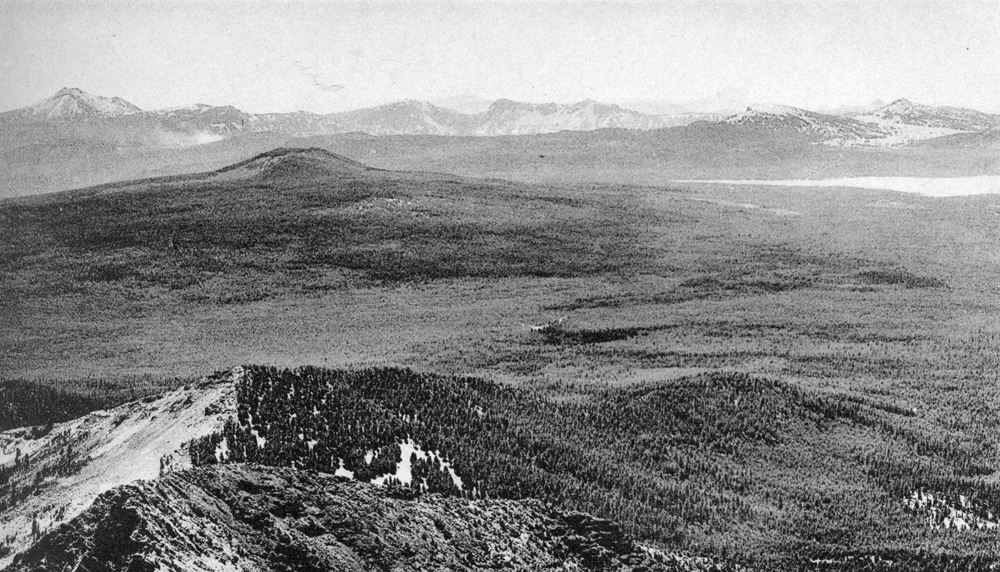The Geology of Crater Lake National Park, OregonWith a reconnaissance of the Cascade Range southward to Mount Shasta by Howell Williams
Timber Crater
|
Plate 14. Fig. 1. Timber Crater and the rim of Crater Lake, from Mount Bailey. Mount Scott on the extreme left. the U-shaped valley beheaded by the far (south) wall of the caldera in Sun Notch. The bare patch on the extreme right is part of the Pumice Desert. In the middle distance is the symmetrical shield volcano of Timber Crater, with its summit cinder cone. (Photograph by Victor Duran.) |
IN THE northeast corner of the park, there is a well preserved shield volcano capped by pyroclastic cones. From the perfection of its form, this volcano may be judged at once to be among the youngest of the region. See plate 14, figure I.
The shield is approximately 5 miles in diameter, and the volume of material erupted approximates 5 cubic miles. The shield is composed essentially of flows of olivine basalt and basaltic andesite. The only notable variation is in the texture and color of the lavas and in the degree of vesicularity. As on other shield volcanoes in the Cascades, the pale-colored lavas are less vesicular and poorer in glass than the darker lavas, and where both types occur in a single sheet, the crust is darker and contains more vesicles.
Some of the flows show surface forms suggestive of recent eruption, and several of the spurs radiating from the summit region, though covered with pumice, seem to represent flows little modified by erosion.


